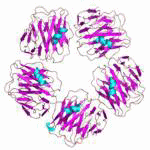Molecular Biology
|
22 january 2019 21:01:17 |
| IJMS, Vol. 20, Pages 470: Identification of Premeiotic, Meiotic, and Postmeiotic Cells in Testicular Biopsies Without Sperm from Sertoli Cell-Only Syndrome Patients (International Journal of Molecular Sciences) |
|
Tweet Sertoli cell-only syndrome (SCOS) affects about 26.3–57.8% of azoospermic men, with their seminiferous tubules containing only Sertoli cells. Recently, it was reported that testicular biopsies from nonobstructive azoospermic (NOA) patients contained germ cells, and that sperm could be found in the tubules of 20% of SCOS patients using testicular sperm extraction technology. Since the patients without sperm in their testicular biopsies do not have therapy to help them to father a biological child, in vitro maturation of spermatogonial stem cells (SSCs) isolated from their testis is a new approach for possible future infertility treatment. Recently, the induction of human and mice SSCs proliferation and differentiation was demonstrated using different culture systems. Our group reported the induction of spermatogonial cell proliferation and differentiation to meiotic and postmeiotic stages in mice, rhesus monkeys, and prepubertal boys with cancer using 3D agar and methylcellulose (MCS) culture systems. The aim of the study was to identify the type of spermatogenic cells present in biopsies without sperm from SCOS patients, and to examine the possibility of inducing spermatogenesis from isolated spermatogonial cells of these biopsies in vitro using 3D MCS. We used nine biopsies without sperm from SCOS patients, and the presence of spermatogenic markers was evaluated by PCR and specific immunofluorescence staining analyses. Isolated testicular cells were cultured in MCS in the presence of StemPro enriched media with different growth factors and the development of colonies/clusters was examined microscopically. We examined the presence of cells from the different stages of spermatogenesis before and after culture in MCS for 3–7 weeks. Our results indicated that these biopsies showed the presence of premeiotic markers (two to seven markers/biopsy), meiotic markers (of nine biopsies, cAMP responsive element modulator-1 (CREM-1) was detected in five, lactate dehydrogenase (LDH) in five, and BOULE in three) and postmeiotic markers (protamine was detected in six biopsies and acrosin in three). In addition, we were able to induce the development of meiotic and/or postmeiotic stages from spermatogonial cells isolated from three biopsies. Thus, our study shows for the first time the presence of meiotic and/or postmeiotic cells in biopsies without the sperm of SCOS patients. Isolated cells from some of these biopsies could be induced to meiotic and/or postmeiotic stages under in vitro culture conditions. |
| 66 viewsCategory: Biochemistry, Biophysics, Molecular Biology |
 IJMS, Vol. 20, Pages 472: Pioglitazone-Primed Mesenchymal Stem Cells Stimulate Cell Proliferation, Collagen Synthesis and Matrix Gene Expression in Tenocytes (International Journal of Molecular Sciences) IJMS, Vol. 20, Pages 472: Pioglitazone-Primed Mesenchymal Stem Cells Stimulate Cell Proliferation, Collagen Synthesis and Matrix Gene Expression in Tenocytes (International Journal of Molecular Sciences)IJMS, Vol. 20, Pages 469: Maternal protein restriction differentially alters the expression of AQP1, AQP9 and VEGFr-2 in the epididymis of rat offspring (International Journal of Molecular Sciences) 
|
| blog comments powered by Disqus |
MyJournals.org
The latest issues of all your favorite science journals on one page
The latest issues of all your favorite science journals on one page



